- Home
- Franklin W. Dixon
A Con Artist in Paris
A Con Artist in Paris Read online
CONTENTS
Chapter 1 Eek!
Chapter 2 Bonjour, Boys
Chapter 3 The Vanishing Smile
Chapter 4 Now You See It . . .
Chapter 5 Gossiping Gumshoes
Chapter 6 The Lucky Lady
Chapter 7 Altered Egos
Chapter 8 Party Crashers
Chapter 9 Famous Last Words
Chapter 10 The Flying Detectives
Chapter 11 UFO: Uncontrollable Flying Object
Chapter 12 Pen Pals
Chapter 13 Rat Burglar
Chapter 14 City of the Dead
Chapter 15 Cornered Rat
Chapter 16 A Bum Leg
Chapter 17 Mightier Than the Sword
Chapter 18 Vive Les Hardys
About Franklin W. Dixon
1
EEK!
FRANK
THE FIRST THING I SAW when I stepped onto the streets of Paris was a giant rat.
“Sweet!” my brother Joe shouted, whipping out his phone to snap a picture of the impossibly large rodent climbing into a sewer in the middle of France’s capital.
“I’ve never seen someone so excited about a rat before,” I said. “Or seen a rat wearing a red beret and a burglar mask, for that matter.”
Lucky for us, this rat was a five-foot-tall cartoon character running off with a baguette, stenciled on the wall of a boulangerie—that’s French for “bakery.” The artist had layered three different stencils on top of one another so the rat, the baguette, and the beret and mask were all different colors.
“All right! We haven’t even been here five minutes and we’ve already seen a piece by Ratatouille. He’s one of the coolest artists working the streets of Paris,” Joe gushed.
From his reaction, you’d think we’d just won the tourist lottery.
Our detective dad, Fenton Hardy, had been invited to speak at the annual International Professional Association of Detectives (IPAD) convention, and he’d invited us to tag along for a little sightseeing. We probably could have told all those professional investigators a thing or two about detecting ourselves—I mean, we are the world’s foremost underage amateur PIs. Well, at least the foremost in Bayport, our hometown, where we have a well-earned reputation as teenage detectives extraordinaire. Detecting runs in our blood, apparently. IPAD wasn’t interested in what Fenton’s kids had to say, though, so we got a week off to explore one of Europe’s most beautiful cities.
Not even a sleepless nine-hour red-eye flight across the Atlantic could press the snooze button on my excitement level. All that classic art! Architecture! History!
“A brand-new piece by Cosmonaute!” Joe had his phone aimed across the cobblestone street to a simple tile mosaic of a UFO landing on the top story of a brick building that had to be hundreds of years old. “I don’t think anyone’s even posted this one yet.”
The artist had climbed all the way up to the top of the building and glued the square tiles to the wall in the shape of a flying saucer made out of old eight-bit video graphics, like the ones from the very first arcade games.
Joe looked stoked as he uploaded the picture to his Instagram account, adding the hashtags #cosmonaute #streetart #paris and #streetarthuntparis so other street art “grammers” from around the world could see it too.
“I can’t believe people come to a city with a world-class museum like the Louvre just to take pictures of cartoon rats and spaceships.” I rubbed my confused, jet-lagged eyes. “Here we are in one of the most historic places on earth, surrounded by amazing landmarks, and all my brother wants to see is the graffiti and arcade spaceships.”
“It’s not just graffiti, dude,” he said seriously. “It’s street art. People like Ratatouille and Cosmonaute are creating original works of art, and they’re using the environment around them to tell a story at the same time. There’s an international pop art renaissance going on, and Paris is its epicenter.”
My brother’s head was big enough already without me complimenting him, but I was impressed with how much thought he’d put into it. I was usually the one lecturing him on things like art appreciation!
“I get it, but we’re in Paris! Some of the most treasured masterworks ever created are here. Van Gogh, Monet, Picasso, Dali. They all lived and painted right here.”
“Well, Snooty McArtFace, Ratatouille painting himself all over Paris turns the whole city into an interactive museum, and you don’t have to wait in line or go to a hoity gallery to see it,” Joe retorted. “Besides, some people think artists like Le Stylo are masters.”
“I . . .” I shut up is what I did. “You got me there. I can’t talk smack about a guy who got away with turning the most famous clock tower in the world into a smartwatch.”
Le Stylo’s handle meant “The Pen” in French, and he’d been making international headlines for all the crazy places his outlaw art installations had appeared. Like the time he projected digital numbers and icons over the Big Ben clock tower in London and then changed the sign so it said iBen as a commentary on historical preservation in a tech-driven society.
The whole world was Le Stylo’s canvas, and he used it for activism, too. The saying that inspired his name—the pen is mightier than the sword—also inspired his art. His antiwar stencils of soldiers wielding his signature feather fountain pen instead of guns had appeared all over the world on government buildings, police headquarters, and even in war zones.
“My favorite is when he used suction cups to scale that mirrored office building in Texas wearing a mirror-covered jumpsuit so no one would see him,” Joe said, referencing Le Stylo’s protest of a big oil spill the year before.
“Stenciling a flock of oil-covered pelicans crashing into that big oil CEO’s window took talent and guts,” I agreed, wondering how terrifying it must be to climb a skyscraper like you were Spider-Man. That kind of daredevil stuff was definitely more up Joe’s alley.
“I heard he donates all the money from his paintings to charity,” Joe shared. “I bet Vincent van Gogh didn’t even do that.”
“He might have if he hadn’t died penniless and unknown,” I informed my brother.
“Oh,” Joe said, looking up at the sky. “Sorry, Vince, my bad.”
“Stylo’s definitely got VVG beat in the popularity-while-alive contest,” I observed. “It’s amazing how someone can turn themselves into just about the world’s most popular artist without anyone discovering their real identity.”
Le Stylo wasn’t just an artist/activist/prankster. He was a mystery. And no one appreciates a good mystery as much as a Hardy boy.
“I can’t wait to check out the exhibit with his new work at that Galerie Simone place near the hotel,” Joe said. “That’s one hoity gallery I don’t mind waiting in line for.”
It was a different place near the hotel that I was excited to wait in line for. A medieval royal palace filled with over 650,000 square feet of France’s most priceless treasures.
2
BONJOUR, BOYS
JOE
OKAY, FOR A STUFFY OLD museum, the Louvre was pretty epic. The converted palace Frank kept blabbing about took up almost half a mile along the Right Bank of the Seine River. That’s what the Parisians call the north side of the river that divides the city in half. The museum may have been historic, but it wasn’t entirely old. The gigantic glass pyramid surrounded by triangle-shaped reflection pools in the outdoor square by the entrance gave the place a modern touch I appreciated.
A street cut right through the square, and the whole outdoor part was open to the public without having to buy a ticket, so tons of tourists were taking pictures in front of the pyramid as we walked past. One family was even taking selfies with the security guard next to the little securit
y booth across the square.
“Did you know the Louvre is the largest museum in the world, with over thirty-five thousand objects dating all the way back to prehistoric times?” Frank asked.
“I do now.” I chuckled as we cut through the square to our hotel across the street on Rue de Rivoli (that means Rivoli Street).
“Leonardo da Vinci’s Mona Lisa gets over eight million visitors alone,” Frank said, slipping into full tour-guide mode. He’d read so much stuff about Paris before our trip, he could have worked for the French tourism board. “The painting is so valuable, they keep it in an armor-plated steel display case behind multiple layers of impermeable glass. It’s practically theft-proof. But part of the reason it’s so famous is because it was stolen. A handyman actually walked off with it way back in the early 1900s.”
“Uh-huh,” I mumbled, only half listening.
“When they caught him, he rationalized it by saying that Napoléon Bonaparte, who had been the emperor of France in the early 1800s, soon after the Louvre became a museum, stole it first. Which was actually incorrect, because even though Napoléon had stolen a lot of art during his conquests, the museum had bought that one legally. And now it’s the most valuable painting in the world, worth about seven hundred eighty million bucks.”
“Sacré bleu!” I exclaimed. I thought that meant “sacred blue”—I didn’t speak much French, but I’d seen enough movies to know that’s kind of like the French version of “holy cow.” I’d totally been kind of zoning out, like I usually do when Frank starts rambling, until he got to the part about 780 million bucks. “Le Stylo’s most expensive painting only sold for five hundred thousand dollars. Talk about a million-dollar smile!”
You don’t have to be an art scholar to know about the Mona Lisa. The painting of a smirking Italian woman still shows up in pop culture over five hundred years later. Even Ratatouille and Cosmonaute had Mona Lisa street-art mash-ups. There was a kind of rivalry between the two street artists, and I’d seen both of their Mona Lisa spoofs in my Instagram feed just recently. Cosmonaute’s was another simple mosaic made out of square tiles so she looked like a character from an old-school arcade game. Ratatouille’s Monatouille Lisa looked a lot like the original painting, actually; well, if the original had a smirking rat wearing Ratatouille’s signature red beret. They’d both also done versions of Monet paintings, which were pretty cool. Monet was a French Impressionist painter famous for making pictures out of thousands of little dots.
• • •
“Bonjour, boys,” a familiar voice with a Bayport accent greeted us as we walked into the hotel lobby. We turned around to see Bayport’s top cop, Chief Olaf, talking to a pudgy older guy holding a fancy carved box. I didn’t know who his new friend was, but it sure was odd seeing the chief dressed as a tourist in a floral shirt instead of his normal uniform. Maybe he thought the conference was being held in Hawaii instead of France.
“Hey, Chief!” I said. “Nice fanny pack.”
“Thanks, Joe! I got it at . . .” The chief must have figured out I was joking, because he suddenly started growling.
“I think in France it’s technically called a sac banane,” Frank translated helpfully.
“Grrrr,” the chief growled again. “It’s bad enough you boys make my job harder in Bayport; at least let me enjoy my vacation in Europe.”
“Oh, I thought you were here attending the detectives’ conference for work, Chief,” Frank reminded him. “Don’t worry, we won’t tell the rest of the department you’re taking a vacation on taxpayer money.”
“What’s French for ‘I’m going to lock you up and throw away the key as soon as we get back to Bayport’?” he deadpanned to Frank.
“Hmm, I’m not sure,” Frank said, checking the translation app on his phone. “I think it’s, Je vais vous . . . ohhh.”
“Good one, Chief,” I said. “You’re catching on.”
“Touché, as the French say.” Chief Olaf beamed proudly. “It’s a shame about your dad’s flight getting canceled. I just hope that storm lets up in time for him to make it for his lecture in a couple of days.”
“Us too,” Frank said. “Dad’s really been looking forward to it.”
Our pops had been wrapping up a case and was supposed to fly out that morning, but all the flights after ours had been grounded.
“I figure it’s my job to keep an eye on you boys until he gets here,” the chief said pointedly. “You stir up enough trouble in little ol’ Bayport; we don’t need you causing an international incident with a whole other country.”
I’m not sure I agreed with the chief’s definition of trouble, but our investigations did have a habit of stepping on the police’s toes back home.
“No worries, Chief,” I assured him. “We really are here on vacation.”
“You better be, because if you think I’m a grump, wait till you meet Chief Inspector Devereux.” Chief Olaf nodded to a tall, stern-looking man talking to a group of guests across the lobby.
“Oui, l’inspecteur has a ferocious reputation, which I, for one, take great comfort in,” interjected the pudgy Frenchman.
“Joe and Frank Hardy, meet Monsieur Plouffe,” the chief said, introducing us.
“It’s a pleasure to meet you, sir,” Frank said, shaking his hand. “Are you one of the detectives here for the IPAD conference too?”
“Ah, non, I may be the only guest at the hotel who is not,” Plouffe said in his thick French accent.
“Monsieur Plouffe is a collector of historical French art and antiques,” the chief filled us in.
“Oui, and I just made a rather extraordinary purchase for my collection. So I thought, where safer to keep it during the remainder of my stay in Paris than the safe in a hotel full of the world’s best police detectives?” Plouffe gestured to the IPAD guests milling about the lobby.
He held the carved box out for us to examine, then opened it so reverently I thought rays of golden light might come flying out while angels started singing. They didn’t, but the contents were pretty impressive.
“Whoa!” Frank’s mouth dropped open. “That fountain pen must be over two hundred years old. And it looks like it’s solid gold, even the nib.”
“Very good! You know your history,” Plouffe complimented Frank as he lifted the pen to the light. It was one of those old-fashioned pens from way back in the days when you had to keep dipping the pen in a bottle of ink to write. I may not know a lot about antique pens, but I could tell this one was special. It was embossed with vines wrapped around a stag’s antlers, and it had the initials N.B. carved in fancy script on the flattened gold tip (that’s the part Frank called the nib).
“It was Napoléon Bonaparte’s, seized from the desk of a vanquished foe,” Plouffe continued, setting the pen back in the box next to a jar of dried ancient black ink. “The emperor used this very pen to write his last letters from exile before his death in 1821.”
Napoléon was a big deal in France, and everywhere else in the world too, for that matter. I may not be a history nerd like Frank, but even I knew that Napoléon was one of the most famous military leaders of all time.
“That, boys, is the most expensive pen you’ll ever see,” the chief said proudly, as if it was his own.
“Nine hundred and fifty thousand euros, to be exact,” said Plouffe as he closed the case.
“That’s over a million dollars,” Frank gasped.
“And worth every penny for someone who values the preservation of France’s past as much as I do,” Plouffe said. “It sat on the desk of an emperor, and when I return to my château in the countryside, it will sit on mine.”
“That’s a really cool pen, Mr. Plouffe, but for a million big ones, I’ll stick with my trusty ballpoint Bic.” I tried to stifle a yawn.
“You kids look about as tired as I feel,” said the chief. “I say we all call it a night.”
We’d somehow lucked out and had a room on the top floor overlooking the Louvre, but Frank and I were so tired
we both passed out before we got a chance to check out the view.
I was in the middle of a dream about Napoléon fighting in battle when I realized those weren’t cannons I was hearing, they were fireworks. And they were coming from outside our window.
“Is this how they wake up every day in France?” I groaned, squinting through bleary eyes to see the 5:01 A.M. on my phone.
“Sumpnwerdsgonon,” Frank mumbled from his bed. Or at least that’s what it sounded like.
“English, bro,” I said.
He cleared his throat and tried a second time. “Something weird is going on.”
We stumbled out of our beds and over to the window to see a huge display of red and blue fireworks exploding over the Louvre, illuminating the huge sign that now hung down the side of the seventy-foot-tall glass pyramid in front of the museum.
“Uh, that wasn’t there yesterday, was it?” I asked.
“Uh-uh,” he replied, mouth agape.
The sign read BONJOUR, INSPECTEURS! above a thirty-foot-tall Le Stylo–style stencil caricature of the Mona Lisa holding Le Stylo’s signature feathered pen as if she had just finished drawing herself. Below that were the words, NE ME BLMEZ PAS. NAPOLÉON LA VOLÉ EN PREMIER.
Frank was already typing away into his French to English translation app.
“Don’t blame me,” he read. “Napoléon stole it first.”
3
THE VANISHING SMILE
FRANK
BY THE TIME WE’D MADE it down to the lobby, detectives in their pajamas had started pouring out of the hotel and across the street like a half-dressed herd of frantic international investigators. I noticed Monsieur Plouffe, the art collector, among them. A series of booms echoed from the hotel roof as we followed, showering everyone in French-flag-colored red and blue confetti shot from a confetti cannon somewhere on the hotel roof.
“I think we’ve just become part of Le Stylo’s newest stunt,” Joe called as the confetti-covered detectives reached the foot of the Louvre pyramid.
I looked up at the towering drawing of the Mona Lisa smirking with the outlaw artist’s pen in her hand.

 The Great Pumpkin Smash
The Great Pumpkin Smash Who Let the Frogs Out?
Who Let the Frogs Out? Return to Black Bear Mountain
Return to Black Bear Mountain A Treacherous Tide
A Treacherous Tide Bug-Napped
Bug-Napped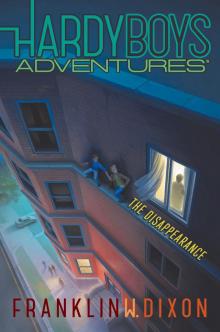 The Disappearance
The Disappearance Sea Life Secrets
Sea Life Secrets The Mystery of the Chinese Junk
The Mystery of the Chinese Junk A Skateboard Cat-astrophe
A Skateboard Cat-astrophe Too Many Traitors
Too Many Traitors Galaxy X
Galaxy X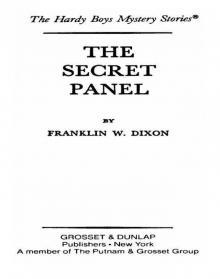 The Secret Panel
The Secret Panel The Secret of Wildcat Swamp
The Secret of Wildcat Swamp The Secret of the Caves
The Secret of the Caves The Caribbean Cruise Caper
The Caribbean Cruise Caper Without a Trace
Without a Trace The Mystery of the Spiral Bridge
The Mystery of the Spiral Bridge Movie Menace
Movie Menace Dungeons & Detectives
Dungeons & Detectives Water-Ski Wipeout
Water-Ski Wipeout The Case of the Psychic's Vision
The Case of the Psychic's Vision X-plosion
X-plosion Deathgame
Deathgame The Apeman's Secret
The Apeman's Secret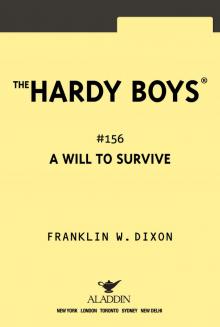 A Will to Survive
A Will to Survive Mystery at Devil's Paw
Mystery at Devil's Paw Blood Money
Blood Money The Mark on the Door
The Mark on the Door Scene of the Crime
Scene of the Crime The Gray Hunter's Revenge
The Gray Hunter's Revenge Stolen Identity
Stolen Identity The Mummy's Curse
The Mummy's Curse Mystery of Smugglers Cove
Mystery of Smugglers Cove Diplomatic Deceit
Diplomatic Deceit The Haunted Fort
The Haunted Fort The Crisscross Shadow
The Crisscross Shadow Secret of the Red Arrow
Secret of the Red Arrow Trial and Terror
Trial and Terror The Short-Wave Mystery
The Short-Wave Mystery The Spy That Never Lies
The Spy That Never Lies Operation: Survival
Operation: Survival Deception on the Set
Deception on the Set The Sign of the Crooked Arrow
The Sign of the Crooked Arrow Hunting for Hidden Gold
Hunting for Hidden Gold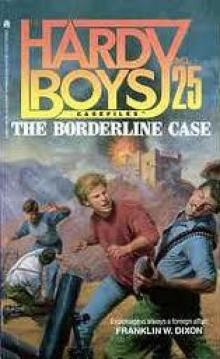 Disaster for Hire
Disaster for Hire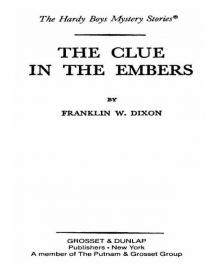 The Clue in the Embers
The Clue in the Embers Danger Zone
Danger Zone The Hidden Harbor Mystery
The Hidden Harbor Mystery Eye on Crime
Eye on Crime A Game Called Chaos
A Game Called Chaos The Bicycle Thief
The Bicycle Thief The Missing Playbook
The Missing Playbook Survival Run
Survival Run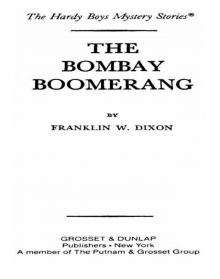 The Bombay Boomerang
The Bombay Boomerang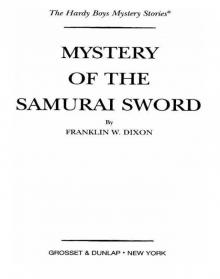 Mystery of the Samurai Sword
Mystery of the Samurai Sword Burned
Burned Death and Diamonds
Death and Diamonds Murder at the Mall
Murder at the Mall The Prime-Time Crime
The Prime-Time Crime Hide-and-Sneak
Hide-and-Sneak Training for Trouble
Training for Trouble Trouble in Paradise
Trouble in Paradise While the Clock Ticked
While the Clock Ticked The Alaskan Adventure
The Alaskan Adventure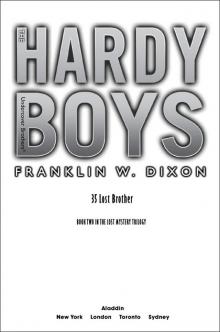 The Lost Brother
The Lost Brother Tunnel of Secrets
Tunnel of Secrets A Killing in the Market
A Killing in the Market The Curse of the Ancient Emerald
The Curse of the Ancient Emerald The Arctic Patrol Mystery
The Arctic Patrol Mystery Past and Present Danger
Past and Present Danger The Castle Conundrum (Hardy Boys)
The Castle Conundrum (Hardy Boys) Farming Fear
Farming Fear Nowhere to Run
Nowhere to Run The Secret of the Soldier's Gold
The Secret of the Soldier's Gold Danger on Vampire Trail
Danger on Vampire Trail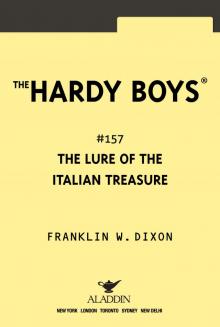 The Lure of the Italian Treasure
The Lure of the Italian Treasure The Mystery of Cabin Island
The Mystery of Cabin Island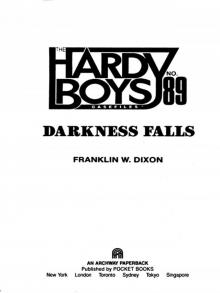 Darkness Falls
Darkness Falls Night of the Werewolf
Night of the Werewolf Danger in the Extreme
Danger in the Extreme The Lazarus Plot
The Lazarus Plot The Hooded Hawk Mystery
The Hooded Hawk Mystery Double Trouble
Double Trouble Forever Lost
Forever Lost Pushed
Pushed The Great Airport Mystery
The Great Airport Mystery The Hunt for Four Brothers
The Hunt for Four Brothers The Disappearing Floor
The Disappearing Floor Motocross Madness
Motocross Madness Foul Play
Foul Play High-Speed Showdown
High-Speed Showdown The Mummy Case
The Mummy Case The Firebird Rocket
The Firebird Rocket Trouble in Warp Space
Trouble in Warp Space Ship of Secrets
Ship of Secrets Line of Fire
Line of Fire The Clue of the Broken Blade
The Clue of the Broken Blade Medieval Upheaval
Medieval Upheaval Witness to Murder
Witness to Murder The Giant Rat of Sumatra
The Giant Rat of Sumatra Attack of the Bayport Beast
Attack of the Bayport Beast The Borgia Dagger
The Borgia Dagger Scavenger Hunt Heist
Scavenger Hunt Heist No Way Out
No Way Out Murder House
Murder House The X-Factor
The X-Factor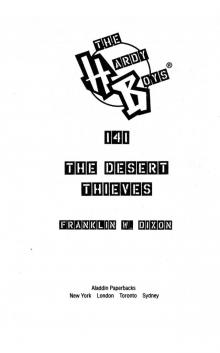 The Desert Thieves
The Desert Thieves Mystery of the Phantom Heist
Mystery of the Phantom Heist The Battle of Bayport
The Battle of Bayport Final Cut
Final Cut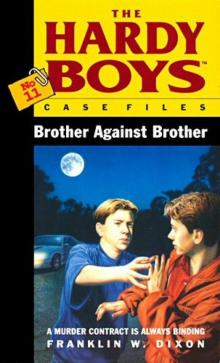 Brother Against Brother
Brother Against Brother Private Killer
Private Killer The Mystery of the Black Rhino
The Mystery of the Black Rhino Feeding Frenzy
Feeding Frenzy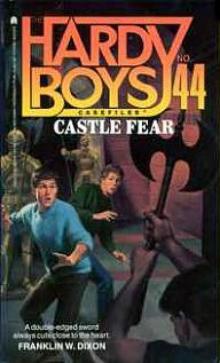 Castle Fear
Castle Fear A Figure in Hiding
A Figure in Hiding Hopping Mad
Hopping Mad Dead on Target
Dead on Target Skin and Bones
Skin and Bones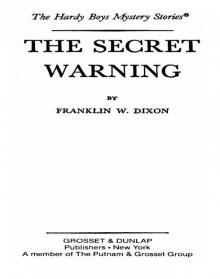 The Secret Warning
The Secret Warning Flesh and Blood
Flesh and Blood The Shattered Helmet
The Shattered Helmet Boardwalk Bust
Boardwalk Bust Terror at High Tide
Terror at High Tide In Plane Sight
In Plane Sight The London Deception
The London Deception Evil, Inc.
Evil, Inc. Deprivation House
Deprivation House The Mystery of the Aztec Warrior
The Mystery of the Aztec Warrior First Day, Worst Day
First Day, Worst Day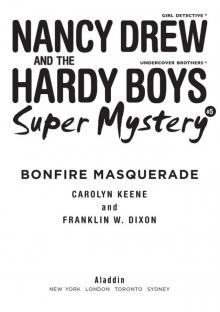 Bonfire Masquerade
Bonfire Masquerade Killer Connections
Killer Connections Strategic Moves
Strategic Moves Warehouse Rumble
Warehouse Rumble The Chase for the Mystery Twister
The Chase for the Mystery Twister The Tower Treasure thb-1
The Tower Treasure thb-1 The Children of the Lost
The Children of the Lost The Last Laugh
The Last Laugh Trick-or-Trouble
Trick-or-Trouble Perfect Getaway
Perfect Getaway Nightmare in Angel City
Nightmare in Angel City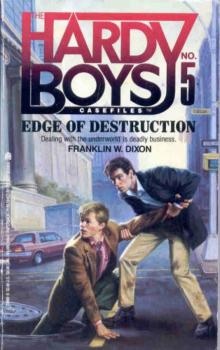 Edge of Destruction
Edge of Destruction Fright Wave
Fright Wave The Jungle Pyramid
The Jungle Pyramid Footprints Under the Window
Footprints Under the Window The Gross Ghost Mystery
The Gross Ghost Mystery A Monster of a Mystery
A Monster of a Mystery House Arrest
House Arrest Mystery of the Desert Giant
Mystery of the Desert Giant Talent Show Tricks
Talent Show Tricks The Sting of the Scorpion
The Sting of the Scorpion The Secret of Skull Mountain
The Secret of Skull Mountain The Missing Chums
The Missing Chums Kickoff to Danger
Kickoff to Danger Cult of Crime
Cult of Crime Running on Fumes
Running on Fumes Martial Law
Martial Law The Pentagon Spy
The Pentagon Spy Hazed
Hazed The Secret Agent on Flight 101
The Secret Agent on Flight 101 Running on Empty
Running on Empty Top Ten Ways to Die
Top Ten Ways to Die The Missing Mitt
The Missing Mitt The Melted Coins
The Melted Coins The Rocky Road to Revenge
The Rocky Road to Revenge The Masked Monkey
The Masked Monkey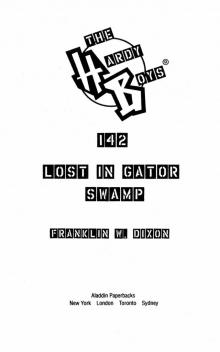 Lost in Gator Swamp
Lost in Gator Swamp Extreme Danger
Extreme Danger Street Spies
Street Spies The Wailing Siren Mystery
The Wailing Siren Mystery The Dangerous Transmission
The Dangerous Transmission Hurricane Joe
Hurricane Joe The Crisscross Crime
The Crisscross Crime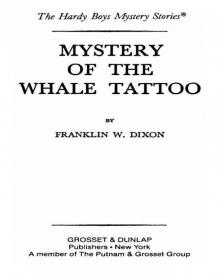 Mystery of the Whale Tattoo
Mystery of the Whale Tattoo The House on the Cliff
The House on the Cliff Camping Chaos
Camping Chaos Ghost of a Chance
Ghost of a Chance Tagged for Terror
Tagged for Terror Thrill Ride
Thrill Ride Fossil Frenzy
Fossil Frenzy The Time Warp Wonder
The Time Warp Wonder Ghost Stories
Ghost Stories Speed Times Five
Speed Times Five What Happened at Midnight
What Happened at Midnight Three-Ring Terror
Three-Ring Terror Trouble at the Arcade
Trouble at the Arcade The Clue of the Hissing Serpent
The Clue of the Hissing Serpent Trouble in the Pipeline
Trouble in the Pipeline The Tower Treasure
The Tower Treasure Hostages of Hate
Hostages of Hate The Crowning Terror
The Crowning Terror Daredevils
Daredevils The Vanishing Thieves
The Vanishing Thieves Killer Mission
Killer Mission The Mark of the Blue Tattoo
The Mark of the Blue Tattoo The Witchmaster's Key
The Witchmaster's Key The Deadliest Dare
The Deadliest Dare Peril at Granite Peak
Peril at Granite Peak The Secret Of The Old Mill thb-3
The Secret Of The Old Mill thb-3 Rocky Road
Rocky Road The Demolition Mission
The Demolition Mission Blown Away
Blown Away Passport to Danger
Passport to Danger The Shore Road Mystery
The Shore Road Mystery Trouble Times Two
Trouble Times Two The Yellow Feather Mystery
The Yellow Feather Mystery One False Step
One False Step Crime in the Cards
Crime in the Cards Thick as Thieves
Thick as Thieves The Clue of the Screeching Owl
The Clue of the Screeching Owl The Pacific Conspiracy
The Pacific Conspiracy The Genius Thieves
The Genius Thieves The Flickering Torch Mystery
The Flickering Torch Mystery Into Thin Air
Into Thin Air Highway Robbery
Highway Robbery Deadfall
Deadfall Mystery of the Flying Express
Mystery of the Flying Express The Viking Symbol Mystery
The Viking Symbol Mystery The End of the Trail
The End of the Trail The Number File
The Number File Gold Medal Murder
Gold Medal Murder Bound for Danger
Bound for Danger Collision Course
Collision Course The Madman of Black Bear Mountain
The Madman of Black Bear Mountain The Secret of the Lost Tunnel
The Secret of the Lost Tunnel The Stone Idol
The Stone Idol The Secret of Pirates' Hill
The Secret of Pirates' Hill A Con Artist in Paris
A Con Artist in Paris The Mysterious Caravan
The Mysterious Caravan The Secret of Sigma Seven
The Secret of Sigma Seven The Twisted Claw
The Twisted Claw The Phantom Freighter
The Phantom Freighter The Dead Season
The Dead Season The Video Game Bandit
The Video Game Bandit The Vanishing Game
The Vanishing Game Typhoon Island
Typhoon Island